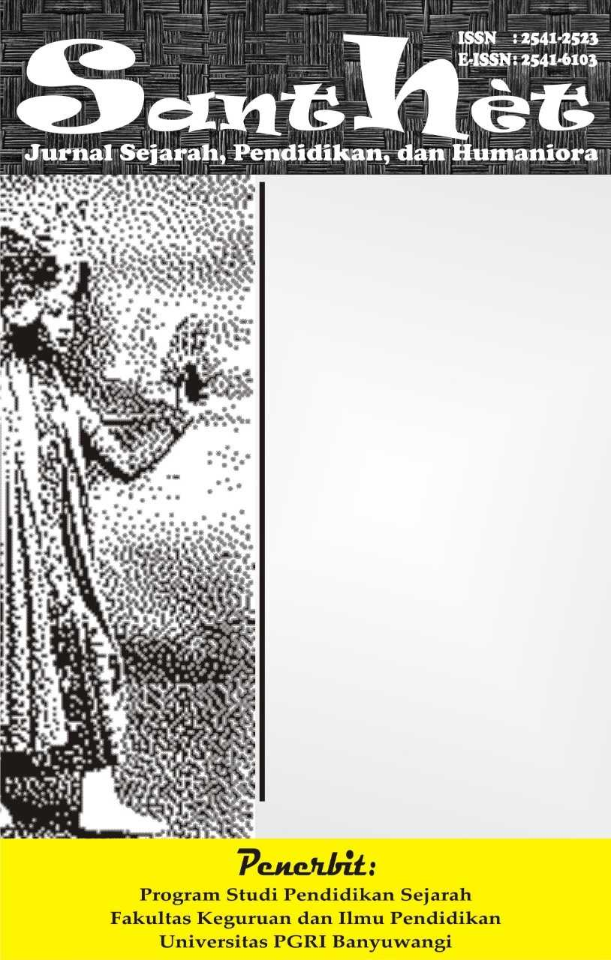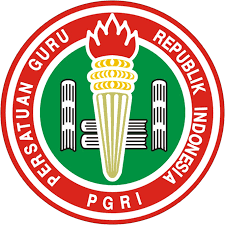Aspects Distribution in Actor Focus of Talaud Language
Distribusi Aspek pada Fokus Pelaku Bahasa Talaud
DOI:
https://doi.org/10.36526/santhet.v8i1.3339Keywords:
Aspect, Focus, Talaud LanguageAbstract
This study aims to describe the form of actor aspect in the focus of Talaud language. Focus refers to a person (more than one) or all living beings, both animals and plants, who can do something and have an impact. In other words, actor focus refers to the speaker's attention to the syntactic-semantic relationship between predicates and nouns to explain who or what is the actor behind. This research uses a qualitative method with a descriptive approach. The population used is native speakers over 30 years old with qualified speaking skills and good mastery of the target language. Mahsun's (2005) Simak method was used to collect data, while Subroto's (2007) Distributional method was used to analyse language data that showed indications of aspectual use in the focus of the actor. This study centres on the morphemic process in predicates. Predicates in Talaud language are usually filled by verbs and the results of word-forming tools such as affixes and re-forms. For the purpose of analysis, the researcher describes the types of verbs (which function as predicates in sentences) in order to see the morphemic process that results in the substitution of nouns to certain parts of the sentence. After passing the analysis stage, six types of aspects that affect the formation of the actor aspect were found, namely inceptive, progressive, perfective, affirmative inceptive, affirmative progressive and sesative. This research shows the disclosure of focus grammatically. Every syntactic function such as noun and adverb can be substituted due to the morphemic process in the predicate.
References
Chaer, A. 2007. Linguistik Umum. Jakarta: Rineka Cipta.
Djajasudarma, F. 1993. Metode Linguistik.Bandung: Rafika Aditama.
Heageman, L. 1991. Introduction to Government and Binding Theory. Cambridge. Cambridge University Press.
Keraf, G. 1990. Linguistik Bandingan Tipologis. Jakarta: PT. Gramedia.
Kridalaksana, Harimurti. 1994. Kelas Kata dalam Bahasa Indonesia. Jakarta: PT. Gramedia Pustaka Utama.
Mahsun. 2007. Metode Penelitian Bahasa: Tahapan Strategi, Metode dan Tekniknya. Jakarta: Raja Grafindo Persada.
Matthews, P. H. 1978. Morphology. London. Cambridge University Press.
Mulyono, I. 2013. Morfologi: Teori dan Sejumput Problematik Terapannya. Bandung: Yrama Widya.
Naylor, P. B. 1978. Toward Focus in Austronesian, in S.A. Wurm dan Lois Carrington (eds.) : 395-443
Nida, E.H. 1970. Morphology: The Descriptive Analysis of Words. Ann Arbor: The University of Michigan Press.
Pike, K. L. 1972. A Syntatic Paradigm. Arlington: University of Texas.
Putrayasa. 2012. Tata Kaliamat Bahasa Indonesia Edisi Revisi. Singaraja: Refika Aditama.
Samsuri. 1994. Analisis Bahasa. Jakarta: Erlangga.
Sneddon, H.N. 1970. The Language of Minahasa, North Celebes”, Oceanic Linguistics 9/1 :11-36
Sprdley, JP. 1979. The Ethnographic Interview: New York: Holt, Reinhart and Winston.
Subroto, E. 2007. Pengantar Metode Penelitian Struktural. Surakarta: Lembaga Pengembangan Pendidikan (LPP) UNS dan UPT Penerbitan dan Percetakan UNS (UNS Press).
Uhlenbeck, E.M. 1953. The Study of Word Classes in Javanese. Lingua.





























